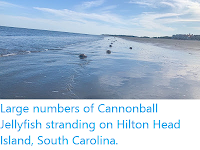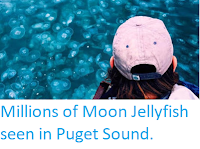The genus Chrysaora is considered the most speciose genus within the subclass Discomedusae, and currently comprises 15 valid species, of which eight are found in the Atlantic Ocean. The Benguela Current Large Marine Ecosystem is a heterogeneous and variable system that may drive genetic heterogeneity. The environments in the extreme north (southern Angola) and south (Agulhas Bank) are quite different, influenced at these latitudinal limits by subtropical waters of the Angola and Agulhas currents, respectively. The northern Benguela upwelling area is defined as the region north of the Lüderitz upwelling cell, and is characterised by a relatively broad shelf and a sluggish circulation: it supports a high phytoplankton biomass and consequently experiences routine hypoxia in parts. By contrast, the southern Benguela upwelling ecosystem is more hydrodynamically active and it displays a pronounced seasonality in, and often intense, coastal upwelling. Whilst the continental shelf along the west coast of South Africa itself is relatively narrow, it extends offshore of Cape Agulhas in the south to a distance of 250 km and, narrows progressively eastwards to Port Elizabeth. This region is known as the Agulhas Bank and it is subject to shelf-edge upwelling, and coastal upwelling at isolated capes and peninsulas. It is an area of strong seasonality in environmental productivity, but comparatively sluggish circulation. There are currently two species of Chrysaora known from the Benguela Current Large Marine Ecosystem. Chrysaora fulgida was described in 1830 from Type material collected off the Cape of Good Hope. It was subsequently recorded north of that point, all the way along the west coast of South Africa and Namibia. Chrysaora africana was described in 1902, and is found along the west and southwest coasts of Africa. Both are coastal species, and are regularly observed in sympatry (living together) off the coast of northern Namibia.
In a paper published in the journal Zootaxa on 15 May 2020, Verena Ras of the Department of Biodiversity and Conservation Biology at the University of the Western Cape, Simone Neethling, also of the Department of Biodiversity and Conservation Biology at the University of the Western Cape, and of Sol Plaatje University, Adriaan Engelbrecht, again of the Department of Biodiversity and Conservation Biology at the University of the Western Cape, André Morandini of the Departamento de Zoologia at the Universidade de São Paulo, Keith Bayha of Noblis ESI, Heidi Skrypzeck, again of the Department of Biodiversity and Conservation Biology at the University of the Western Cape, and of the National Marine and Information Research Centre of Namibia, and Mark Gibbons of the Department of Biodiversity and Conservation Biology at the University of the Western Cape, describe a new species of Chrysaora from the Benguela Current Large Marine Ecosystem.
The new species is named Chrysaora agulhensis, where 'agulhensis' means 'from Agulhas'. The species is described from three specimens, all collected in False Bay, Western Cape. The holotype (when describing a new species
one specimen is designated the holotype; all future specimens
determined to belong to the same species as this holotype therefore
bellong to the species) has a hemispherical umbrella 14.8 cm in diameter, with small raised nematocyst warts, giving it a slightly granular texture. It has sixteen elongated triangular markings extending outward from central apex on bell; the apices of these triangles are pointed toward central apex. The colouration of these triangles alternates between darker brown pigmentation and little to no pigmentation, forming a characteristic star-shaped pattern; the central apex is visible as an unpigmented, translucent circle. White spots are scattered throughout theexumbrellar due to raised nematocyst warts. The umbrella is centrally thickened; the central mesoglea (the non-living gelatinous layer of a Medusa that gives it its structure) is 3.5 times thicker than margin. The umbrella margin is cleft into 32 rounded lappets, four lappets per octant: two rhopalial lappets situated next to rhopalium (small sensory structures) and two velar lappets situated between rhopalial lappets. The rhopalial lappets are not as wide as the velar lappets, thus the velar lappets appear elongated while the rhopalial lappets appear pointed; the lappets are equally pigmented on the upper and lower surface, appearing dark brown.
Holotype specimen (MB-A088455) of Chrysaora agulhensis collected at False Bay (Fish Hoek), South Africa in June 2014, showing the exumbrellar surface with characteristic star-shaped colouration. Ras et al. (2020).
One primary tentacle is found in each octant, located in clefts between adjacent velar lappets, with two well-developed secondary tentacles situated in clefts between adjacent velar and rhopalial lappets (arrangement 2:1:2), for a total of 24 tentacles. The tentacles are laterally flattened (not circular), solid in cross-section and “ribbon-like”; they are less pigmented on the ventral surface and cream in colour, light brown on the dorsal surface; and unpigmented at the base, becoming more pigmented distally and light brown toward the tentacle tip. The subumbrella is translucent white and smooth; with gastrovascular pouches covering a central stomach.
Photograph of Chrysaora agulhensis at Whale Rock during November 2012; side-view of a larger specimen in situ displaying deep purple colouration of the central apex, long trailing oral arms and ribbon-like tentacles. Peter Southwood in Ras et al. (2020).
Like most Scyphazoans, Chrysaora agulhensis has a two stage life-cycle, with a free-swimming medusa stage that breeds sexualy, producing a free awimming larva called a planula. This planula settles onto a hard surface and metamorphoses into a polyp, which reproduces asexually by budding of a second larval form, called ephyrae, which develop into new, sexaul, medusae. Polyps of Chrysaora agulhensis were reared from material collected from Whale Rock in False Bay. These are typically conical in shape and up to 3.5 mm in height. The oral disk roughly half the length of the polyp. Each polyp possesses up to 16 tentacles, which are up to five times the length of the polyp, with four gastric septa and a cruciform mouth. They are white in colour unless strobilating (the process by which ephyrae bud off from the polyps asexually), in which case the upper half becomes brown.
Polyps of Chrysaora agulhensis, settled from adult medusae collected at Robbin Island, South Africa in 2013: image illustrating two fully grown polyps; one strobilating (left) and one not strobilating (right). Ras et al. (2020).
See also...
Follow Sciency Thoughts on Facebook.









